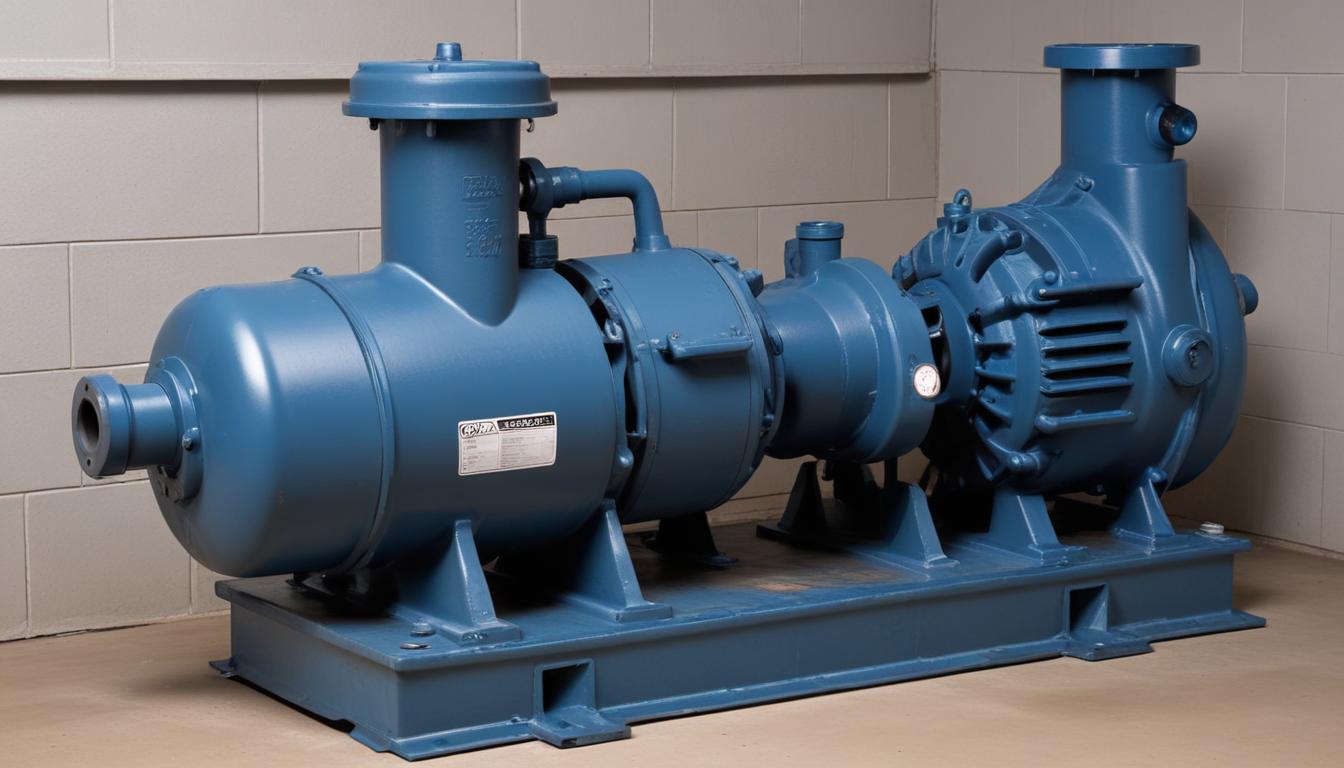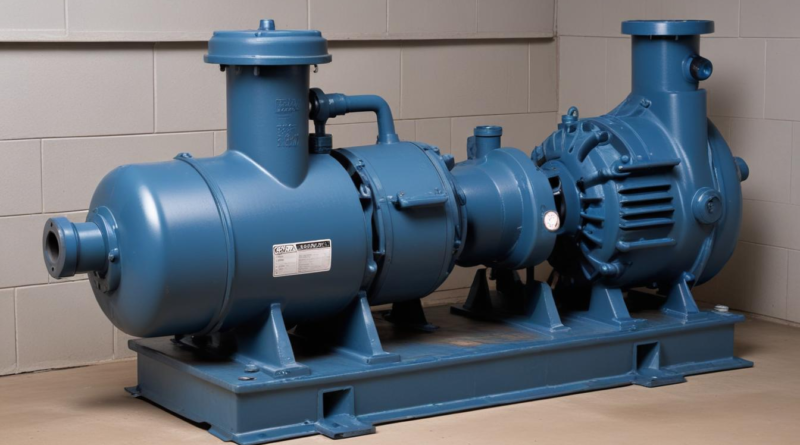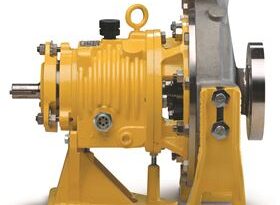how to troubleshoot pump suction issues
Air leaks in the pump suction can significantly impair its performance, leading to inefficient operation or complete failure. Identifying and rectifying these leaks is a crucial step in effective troubleshooting of pump issues. The following approaches can be employed to detect and address air leaks:
- Visual Inspection: Examine all accessible joints, connections, and seals for signs of wear, damage, or deterioration.
- Pressure Testing: Use a pressure gauge to monitor the suction line pressure. Unusual drops may indicate a leak.
- Soap Solution Method: Apply a soap-water mixture to suspected areas; the formation of bubbles signifies escaping air.
- Ultrasonic Leak Detectors: Utilize specialized equipment to detect high-frequency sounds produced by escaping air.
- Smoke Testing: Introduce non-toxic smoke into the suction line to visually identify leakage points.
Once a leak is detected, implement the following solutions to ensure the integrity of the pump assembly:
- Seal Replacement: Replace faulty seals and gaskets to restore airtight connections.
- Tightening Connections: Ensure all fittings and joints are securely tightened to eliminate gaps.
- Pipe Repair or Replacement: Address any damaged sections of the suction piping by repairing or replacing them as necessary.
- Flexible Couplings: Install flexible couplings to accommodate thermal expansion and reduce stress on connections.
By systematically inspecting and addressing air leaks, you can enhance the efficiency and reliability of your pump system, preventing further complications related to pump suction.
verify pump alignment
Proper alignment between the pump and its driver is essential for optimal performance and longevity of the pump system. Misalignment can lead to increased wear, inefficient operation, and even pump failure, thereby exacerbating existing pump suction issues. Implementing a systematic approach to verify pump alignment is a critical aspect of effective troubleshooting. The following steps outline the process to ensure accurate alignment:
- Initial Visual Inspection: Begin by visually inspecting the coupling area for any obvious signs of misalignment, such as uneven gaps or disconnected components.
- Measurement of Shaft Alignment: Utilize a straightedge and feeler gauges to measure the alignment between the pump and motor shafts accurately.
- Dial Indicator Method: Employ dial indicators to detect and quantify angular and parallel offsets between the shafts. This method provides precise measurements essential for corrective actions.
- Laser Alignment Tools: For highly accurate and efficient alignment, use laser alignment systems. These tools offer real-time feedback and simplify the alignment process, reducing the likelihood of human error.
- Vibration Analysis: Conduct vibration analysis to identify any abnormal vibrations that may result from misalignment. Elevated vibration levels often indicate alignment issues that need to be addressed.
The table below summarizes common alignment methods and their respective advantages:
| Alignment Method | Advantages | Considerations |
|---|---|---|
| Straightedge and Feeler Gauges | Simple and cost-effective | Less precise; requires skill |
| Dial Indicators | High accuracy; quantifiable measurements | Requires calibration and expertise |
| Laser Alignment Tools | Fast and highly accurate; minimizes downtime | Higher initial cost |
Upon identifying misalignment, implement the following solutions to correct the issue:
- Adjust Couplings: Modify the position of the motor or pump using shims or adjustable mounts to achieve proper alignment.
- Replace or Repair Couplings: If the coupling itself is damaged or worn, replacing or repairing it may be necessary to restore alignment.
- Realign Bearings: Adjust or replace bearings that may have shifted due to misalignment, ensuring they support the shafts correctly.
- Implement Flexible Couplings: Consider installing flexible couplings that can accommodate minor misalignments and reduce stress on the system.
- Regular Maintenance: Establish a routine maintenance schedule to monitor alignment and address any deviations promptly, preventing future issues.
By meticulously verifying and maintaining proper alignment, you can significantly enhance the efficiency and reliability of your pump system. This proactive approach not only mitigates pump suction problems but also extends the operational lifespan of both the pump and its driver.
inspect suction piping
Inspecting the suction piping is a pivotal component in diagnosing and resolving pump suction issues. Problems within the suction piping can lead to reduced flow rates, cavitation, or complete pump starvation, severely impacting the overall system performance. A thorough inspection involves evaluating the integrity, configuration, and condition of the piping system. Key steps and considerations include:
- Visual Inspection: Examine the suction pipe for visible signs of wear, corrosion, cracks, or blockages that could impede fluid flow.
- Pipe Configuration: Ensure that the piping layout adheres to best practices, minimizing bends and elbows which can contribute to flow restrictions and turbulence.
- Pipe Sizing: Verify that the diameter of the suction piping is appropriate for the required flow rate. Undersized pipes can cause excessive friction losses, while oversized pipes may lead to ineffective priming.
- Internal Surface Condition: Check for buildup of deposits, scaling, or biofilm that can reduce the internal diameter and alter flow characteristics.
- Support and Anchoring: Ensure that suction pipes are adequately supported to prevent sagging or movement, which can lead to joint stress and potential leaks.
To facilitate a systematic approach, the table below outlines common issues found in suction piping and their corresponding implications:
| Issue | Implications | Solutions |
|---|---|---|
| Cracked Pipes | Leakage leading to air ingress and reduced pump efficiency | Replace damaged sections and reinforce joints to prevent future cracks |
| Corrosion | Weakening of pipe structure and potential blockages | Implement corrosion-resistant materials or apply protective coatings |
| Blockages | Reduced flow rate and increased pressure drop | Clean or replace affected pipe segments and install filters if necessary |
| Improper Sizing | Excessive friction losses or poor priming conditions | Redesign piping to match flow requirements, ensuring optimal diameter |
| Excessive Bends | Turbulence and increased energy losses | Simplify pipe layout with straight runs and gradual bends |
During troubleshooting, it is essential to utilize appropriate diagnostic tools and techniques to assess the suction piping effectively:
- Pressure Gauges: Install and monitor pressure gauges along the suction line to identify pressure drops indicative of blockages or leaks.
- Flow Meters: Use flow meters to measure the actual flow rate and compare it with expected values, revealing discrepancies that may stem from piping issues.
- Inspection Cameras: Deploy cameras to visually inspect the internal condition of the pipes, allowing for the detection of hidden blockages or structural damages.
- Thermographic Analysis: Apply infrared thermography to identify areas with abnormal temperature variations, which may suggest leaks or flow restrictions.
Addressing issues found within the suction piping is crucial to restoring optimal pump performance. Implementing the following solutions can help rectify identified problems:
- Pipe Replacement: Replace sections of piping that are extensively damaged, corroded, or blocked to ensure unobstructed flow.
- Seal Enhancements: Upgrade or replace seals and gaskets to prevent leaks and maintain system integrity.
- Piping Reconfiguration: Redesign the piping layout to minimize bends, avoid unnecessary restrictions, and optimize flow paths.
- Installation of Flow Control Devices: Incorporate valves and flow restrictors to manage and stabilize flow rates, reducing pressure fluctuations.
- Regular Maintenance: Establish a routine maintenance schedule to inspect, clean, and maintain suction piping, preventing the recurrence of issues.
By systematically inspecting and addressing the condition and configuration of the suction piping, you can significantly mitigate pump suction problems, ensuring reliable and efficient pump operation.
assess pump performance
 Assessing the performance of the pump is a vital step in diagnosing and resolving pump suction issues. Evaluating key performance metrics helps in identifying deviations from normal operation, which can indicate underlying problems affecting the pump’s ability to maintain adequate suction. The following aspects should be considered when assessing pump performance:
Assessing the performance of the pump is a vital step in diagnosing and resolving pump suction issues. Evaluating key performance metrics helps in identifying deviations from normal operation, which can indicate underlying problems affecting the pump’s ability to maintain adequate suction. The following aspects should be considered when assessing pump performance:
- Flow Rate Measurement: Determine the actual flow rate being delivered by the pump and compare it with the designed or expected flow rate. A significant discrepancy may suggest blockages, leaks, or mechanical inefficiencies.
- Pressure Monitoring: Measure the suction and discharge pressures. Lower than expected suction pressure might indicate insufficient suction lift or air leaks, while discharge pressure issues can point to obstructions or pump wear.
- Power Consumption: Analyze the electrical power usage of the pump. An unexpected increase in power consumption can be a sign of mechanical problems such as bearing failures or impeller wear.
- Vibration Analysis: Perform vibration assessments to detect imbalances, misalignments, or other mechanical defects that could impede pump performance.
- Temperature Monitoring: Monitor the pump and motor temperatures. Elevated temperatures may indicate overloading, inadequate cooling, or lubrication issues.
- Cavitation Signs: Identify symptoms of cavitation, such as noise, vibration, and resultant damage to the impeller and casing, which can reduce pump efficiency and lifespan.
- Performance Curve Analysis: Compare the pump’s operating point with its performance curve to assess whether it is operating within its designed parameters. Deviations can highlight issues affecting suction and overall performance.
The table below outlines common performance parameters, their implications, and potential solutions:
| Performance Parameter | Implications | Solutions |
|---|---|---|
| Reduced Flow Rate | Possible blockages, leaks, or impeller wear | Inspect and clear blockages, repair leaks, or replace worn impellers |
| Low Suction Pressure | Air leaks, insufficient priming, or improper pipe sizing | Check for and fix air leaks, ensure proper priming, and verify pipe dimensions |
| Increased Power Consumption | Mechanical issues like bearing failure or motor inefficiency | Conduct mechanical inspections, service bearings, or upgrade motor components |
| High Vibration Levels | Imbalances, misalignments, or cavitation | Balance pump components, realign shafts, or mitigate cavitation through design adjustments |
| Elevated Temperature | Overloading, poor lubrication, or cooling system failures | Adjust load conditions, service lubrication systems, and inspect cooling mechanisms |
| Cavitation Indicators | Damage to impeller and reduced pump efficiency | Adjust system design to reduce NPSHa, increase NPSH available, or modify impeller design |
Effective troubleshooting of pump performance involves systematically monitoring these parameters and implementing appropriate solutions to address identified issues. Regular performance assessments enable early detection of potential problems, ensuring the pump operates efficiently and maintains reliable suction, thereby extending the system’s operational lifespan and reducing downtime.
examine system priming
Ensuring proper system priming is essential for the efficient operation of your pump system. Priming refers to the process of removing air from the pump and suction line, allowing the pump to fill with the fluid it is intended to move. Without adequate priming, the pump may fail to develop the necessary suction, leading to reduced performance or complete shutdown. To effectively examine system priming, consider the following steps and procedures:
- Check for Air in the System: Before starting the pump, ensure that there is no air trapped in the suction line. Air can prevent the pump from filling completely, resulting in poor suction.
- Verify Priming Devices: Inspect all priming devices such as priming tanks, foot valves, and automatic primers. Ensure they are functioning correctly and are free from obstructions.
- Inspect Suction Conditions: Assess the elevation difference between the fluid source and the pump. Ensure that the suction lift is within the pump’s specifications to maintain effective priming.
- Examine Seals and Gaskets: Inspect all seals and gaskets for integrity. Leaks can allow air to enter the system, disrupting the priming process.
- Evaluate Pump Design: Ensure that the pump is designed for self-priming if necessary. Some pumps require manual priming, while others can handle priming automatically.
- Monitor Priming Indicators: Use indicators or gauges that show the priming status of the pump. These tools can provide real-time feedback on whether the pump is adequately primed.
The table below outlines common priming issues, their implications on pump suction, and potential solutions:
| Issue | Implications | Solutions |
|---|---|---|
| Insufficient Priming | Reduced pump flow and pressure, potential cavitation | Ensure adequate fluid level in the suction tank, check for leaks, and verify priming devices are operational |
| Air Leaks in Suction Line | Intermittent pump operation, decreased efficiency | Repair or replace faulty seals, tighten connections, and use airtight fittings |
| Incorrect Suction Lift | Difficulty in maintaining prime, increased load on the pump | Reposition the pump to reduce suction lift, use a booster pump, or increase suction line diameter |
| Faulty Foot Valve | Loss of prime, frequent air ingestion | Replace or repair the foot valve, ensure proper installation and maintenance |
| Improper Pump Installation | Difficulty in achieving and maintaining prime | Follow manufacturer guidelines for pump installation, ensure correct orientation and alignment |
When troubleshooting priming issues, utilize the following methods and tools to assess the priming condition effectively:
- Manual Priming: For pumps that require manual priming, ensure that the priming valve is fully open and that the pump is adequately filled with fluid before starting.
- Automatic Primers: Inspect automatic priming systems for proper operation. Ensure that timers, sensors, and valves are functioning correctly to maintain continuous priming.
- Flow Monitoring: Use flow meters to verify that the pump is delivering the expected flow rate once primed. Deviations may indicate lingering priming issues.
- Pressure Gauges: Monitor suction and discharge pressures to ensure they align with the pump’s performance specifications. Abnormal readings can highlight priming problems.
- Visual Inspections: Regularly inspect the system for signs of air ingress, such as bubbles in the fluid or irregular flow patterns.
Implementing effective solutions to priming issues can significantly enhance pump suction performance and overall system reliability:
- Seal and Gasket Maintenance: Regularly inspect and replace seals and gaskets to prevent air leaks.
- Optimize Pump Placement: Position the pump as close to the fluid source as possible to minimize suction lift and enhance priming efficiency.
- Upgrade Priming Devices: Invest in high-quality priming systems that offer improved reliability and performance.
- Enhance Suction Line Design: Design the suction piping to minimize bends, reduce friction losses, and prevent air pockets.
- Implement Redundancy: Use backup priming systems to ensure continuous operation in case of primary system failure.
- Conduct Regular Maintenance: Establish a maintenance schedule to routinely check and service priming components, ensuring ongoing effectiveness.
By meticulously examining and addressing system priming, you can prevent common pump suction issues, ensuring that your pump operates smoothly and efficiently. Effective priming not only enhances pump performance but also extends the lifespan of the entire pumping system, reducing the likelihood of unexpected downtimes and costly repairs.



